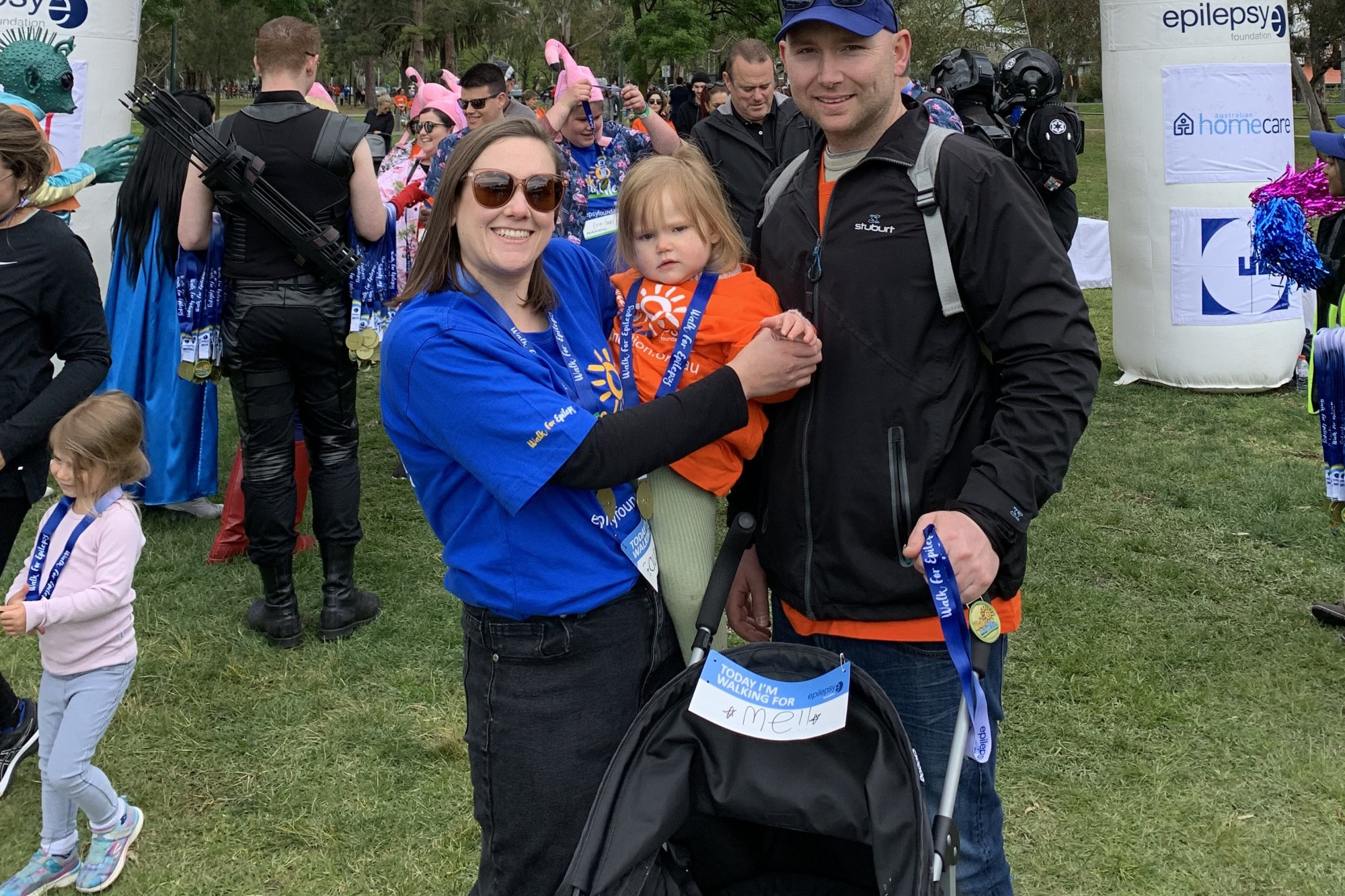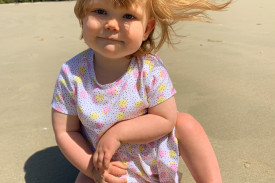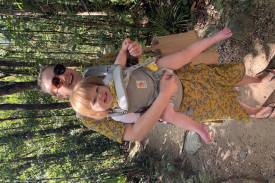General News
19 September, 2020
Goldie is a ray of joy for her family
CAMPERDOWN’S Goldie Tesselaar was just 10 months old when her life, and the lives of her family, changed dramatically.

CAMPERDOWN’S Goldie Tesselaar was just 10 months old when her life, and the lives of her family, changed dramatically.
Her mum, Charlene, said she had always wanted to name her baby after a flower, but which flower would be dependent on the colour of her hair.
“When my little girl was born and the nurse said, “oh she has red hair!” I was thrilled, because I would give her the name “Marigold” and the nickname Goldie,” Mrs Tesselaar said.
At just 10 months, Goldie suddenly started having epileptic episodes.
Mrs Tesselaar said she had never felt such fear as she did when she saw her little girl choking.
“She was so young.I remember we were eating dinner and then Goldie was choking. She was red, stiff and making very strange noises,” she said.
“We immediately called an ambulance, but by the time they arrived she seemed fine.
“Then a couple of weeks later, the same day we were moving to the country from Melbourne, the very moment we walked into our new home it happened again.
“My heart sank. At that moment I realised this was not a one-off episode. This was something serious.”
Shortly after, Mrs Tesselaar was told Goldie has epilepsy.
“In fact, she has various types of seizures, including infantile spasms, focal seizures and absence seizures,” she said.
Mrs Tesselaar said deep down she knew something was not right when Goldie was much younger, as she was a very unsettled baby and wouldn’t sleep.
“It really wouldn’t surprise me if there was seizure activity going on earlier than the diagnosis,” she said.
“Although we’re having trouble getting the seizures under control with medication, Goldie can be seizure free for a couple of months but then the seizures just sneak back in again.
“She has up to 100 seizures every day. I can’t imagine what my little possum goes through.”
Upon learning of Goldie’s diagnosis, Mrs Tesselaar said it took awhile for her and husband Colin to process the diagnosis.
“So many people said, “oh she’ll grow out of it,” or, “I had that as a kid and I grew out of it.” It’s hard to explain to them that Goldie will not grow out of epilepsy,” she said.
“At the time, I thought epilepsy was something we could fix, but I was wrong. I didn’t realise how serious and long-term epilepsy is.”
“I didn’t have an understanding and I certainly didn’t know there were so many different types of epilepsy.”
Mrs Tesselaar said epilepsy was not just a rough road, it could also be a lonely road, if it were not for the Epilepsy Foundation.
“When Goldie was diagnosed, I rang the foundation and found caring people on the other end of the phone helping me to understand, giving me the information I needed and being there to listen to me,” she said.
“I just wanted to talk to somebody who did understand. And the foundation was there for me.
“The foundation has provided me with up-to-date, accurate information about Goldie’s epilepsy and the right words to describe her condition to family and friends. If I had questions that I needed to ask the neurologist, the foundation gave me the correct terminology.
“We were also able to develop an epilepsy management plan for the day care centre Goldie goes to with the help of the Foundation.
“Without this plan, Goldie wouldn’t be able to attend day care. She wouldn’t be able to interact and play with children her own age, including other children who also have epilepsy.”
While the family is aware that Goldie has delayed development, Mrs Tesselaar said Goldie was getting stronger and becoming more interactive.
“She absolutely loves Woodley our dog. She giggles when she makes him bark, and boy does she love making him bark, so she giggles more,” she said.
“Today, our lives revolve around appointments and early intervention such as speech therapy, physiotherapy and more.
“Life is different to what I thought it would be, especially for Goldie.
“As a parent you have hopes and dreams for your child. Being told Goldie has epilepsy, I found myself grieving for what I wanted her to have.”
Mrs Tesselaar said the family was no longer afraid of Goldie’s diagnosis because they have a better understanding of her epilepsy.
“Where once I was scared for Goldie’s future, meeting other families, through the foundation, whose child or children have epilepsy and hearing their stories has helped us understand that things will be okay,” she said.
“The support of the foundation has helped me understand that it’s about finding a new road and having the foundation next to us on that road is giving us hope and strength.
“The foundation has turned our journey with epilepsy into a positive one.”
Mrs Tesselaar said Goldie was her world.
“She makes me laugh, she gives me great joy, and she fills my days with lots of love,” she said.
“She’s only three-years old but I feel so very blessed she is my little Marigold.”
Locals can get behind Goldie and help support all epilepsy sufferers and take part in Walk for Epilepsy next month.
People with epilepsy are more prone to seizures due to heightened anxiety, depression and feelings of isolation as a result of COVID-19 lockdown restrictions, according to the Epilepsy Foundation.
“We know this pandemic is causing increased feelings of depression and anxiety among people with epilepsy,” CEO of the Epilepsy Foundation Graeme Shears said.
“Callers to our Information Line have shown concern about a number of factors during lockdown, such as worry that additional anxiety about employment or other issues may cause seizures, the impact of increased isolation on their seizures and even concerns about the effect COVID-19 may have on their seizures, if they get it.
“Therefore, we recommend people with epilepsy discuss any possible psychological problems or issues with their physician in a timely manner, or call our Information Line if they are needing support.”
This year, the Epilepsy Foundation is asking people to take to their local streets from October 1 to 25 and Walk for Epilepsy, in support of the one in 25 Australians who have epilepsy.
Lockdown restrictions due to COVID-19 mean this year’s planned outdoor event, which is the major annual fundraiser for the foundation, has been replaced with the 25-day virtual event.
Mr Shears said this year’s virtual Walk for Epilepsy means people can participate in their own time and in their own way while contributing to the collective effort and raising much-needed funds for people with epilepsy and their families, many of whom are doing it particularly tough during lockdown.
“We’re asking people to walk, run, cycle or swim in their local suburb and tally up the distance covered to collectively reach a target of 25,000 kilometres, the distance around Australia,” he said.
“Participants can decide how many kilometres to contribute to the tally then choose when, where and how they will complete them, between October 1 and 25.
“We want them to set their own goal, set up a fundraising page and hit the pavement.”
The foundation is urging people to participate safely and get some welcome exercise out of the house.
This could be around the local neighbourhood, the park, down by the beach – wherever it’s safe to walk or exercise and bearing in mind any local lockdown rules that may apply such as social distancing, exercising with just one other person and wearing a mask.
“Most importantly, we hope people will ask their friends, family and neighbours to sponsor their challenge,” Mr Shears said.
“It’s a virtual walk you can do safely, at your leisure, all while still helping people with epilepsy.”
It is free to register for the Walk for Epilepsy. For further information and to register visit: www.walkforepilepsy.org.au

